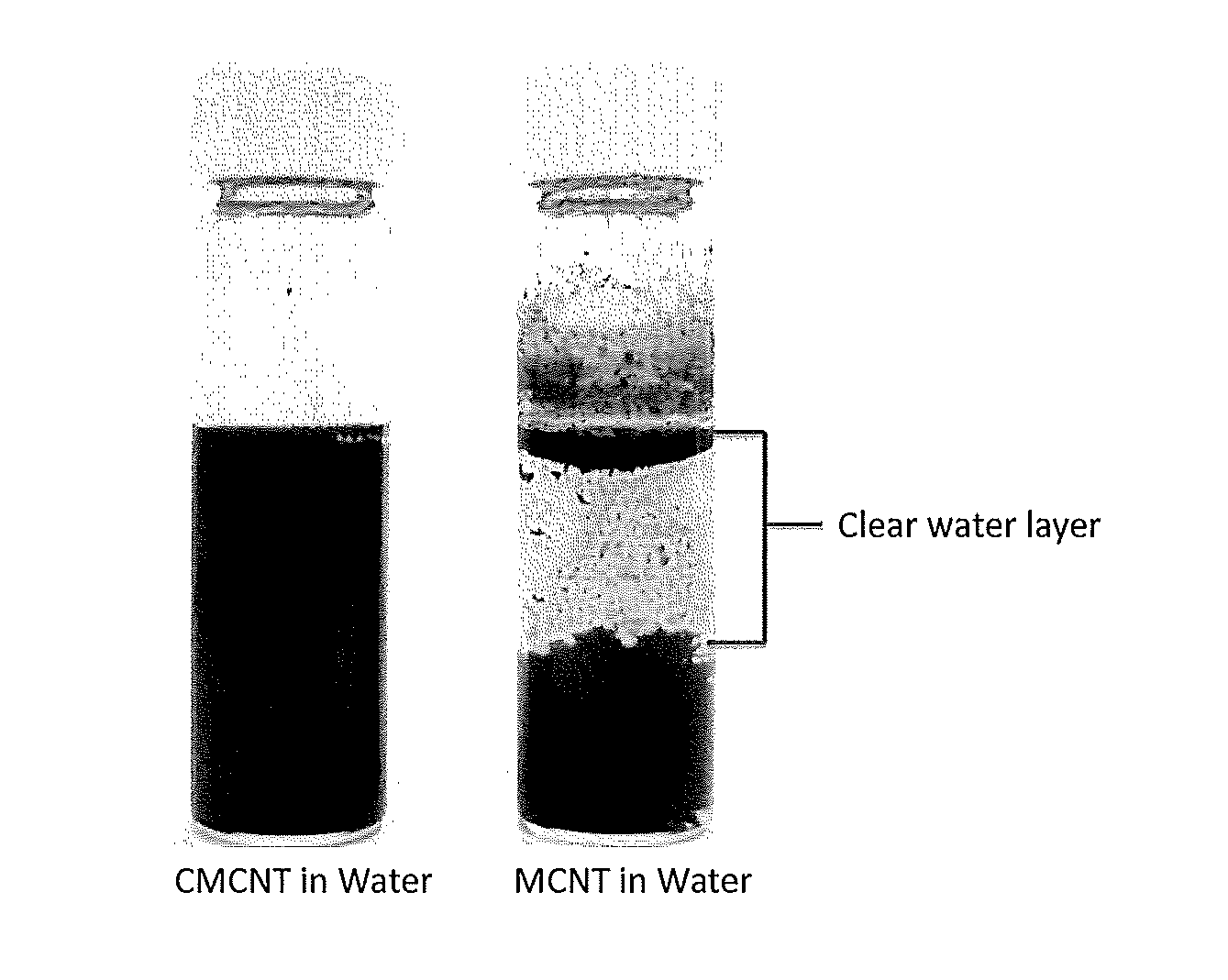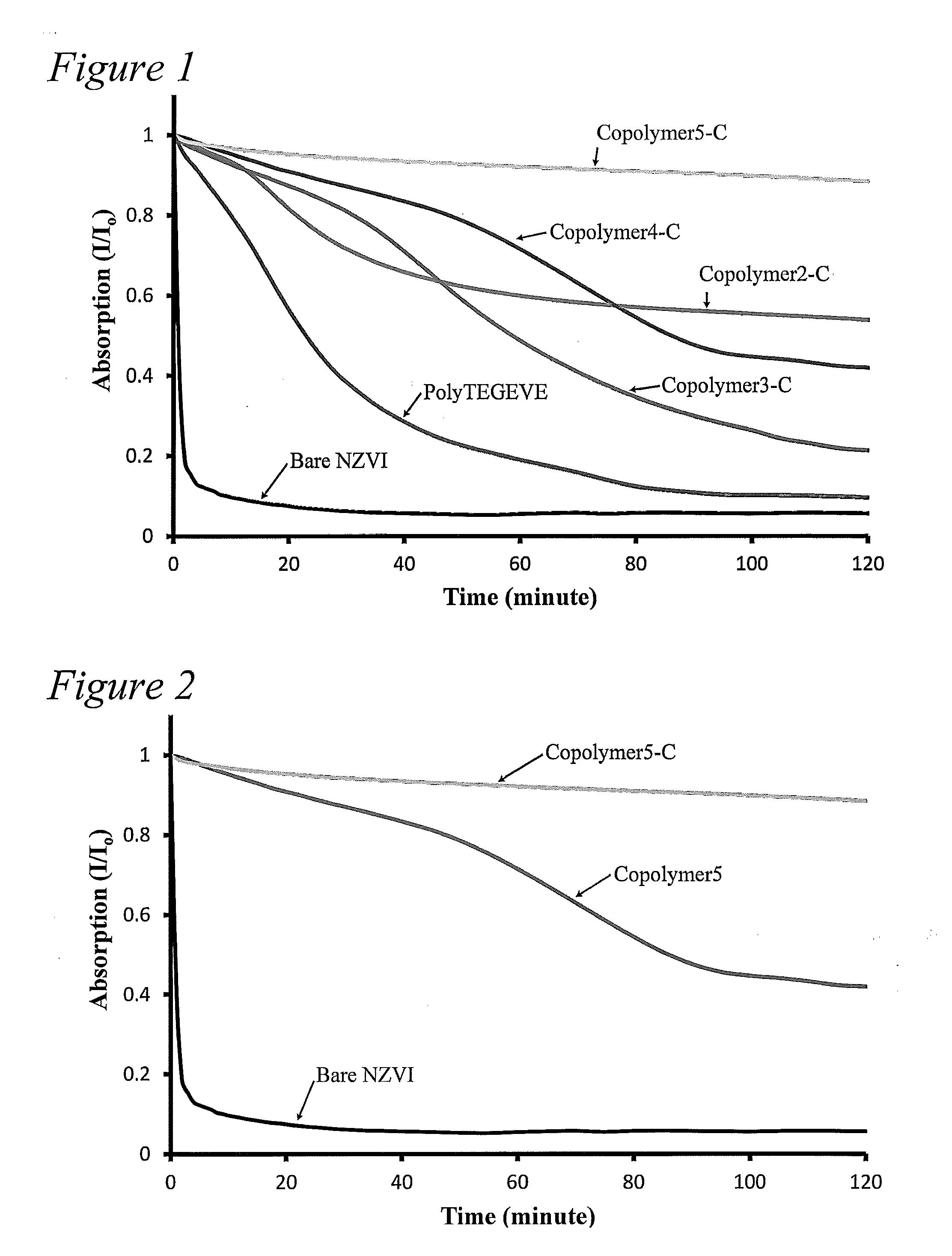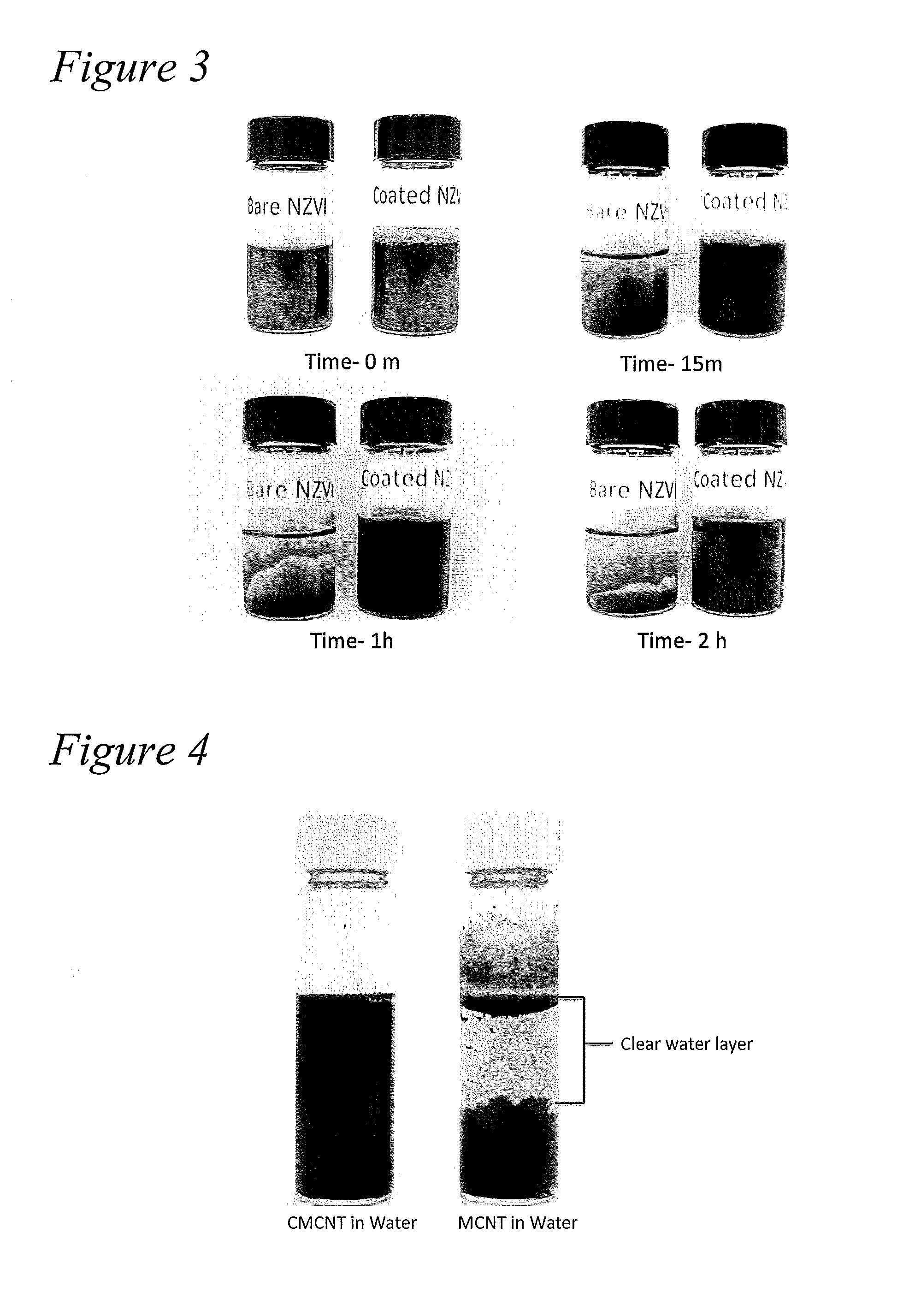Vegetable oil-based polymers for nanoparticle surface modifcation
- Summary
- Abstract
- Description
- Claims
- Application Information
AI Technical Summary
Benefits of technology
Problems solved by technology
Method used
Image
Examples
example 1
Sedimentation Study
Synthesis of Vinyloxyethoxy Soyate (VOES) Monomer
[0074]VOES was synthesized as follows: First, 0.42 g of KOH was dried an oven at 140° C. for 30 minutes to remove moisture. Then, 15 g of Soybean oil, 15 g of ethylene glycol monovinyl ether, and the dried KOH were mixed together in a two-neck round bottom flask and stirred for 3 hr at 70° C. The reaction mixture was then cooled to room temperature and transferred to a 250 ml separating funnel. 100 ml of n-hexane was added to the separating funnel and the solution washed with acidic, deionized (DI) water (pH 3-3.5) twice and then washed multiple time with DI water and finally with brine solution. The organic layer was dried over MgSO4 and the product isolated by vacuum stripping volatiles. Yield: 13 g (84%). 1H NMR (400 MHz, CDCl3, TMS): δ (ppm) 6.45 (m, 1H), 5.34 (m, 1.5H), 4.28 (t, 2H), 4.16 (dd, 1H), 4.01 (dd, 1H), 3.85 (t, 2H, —CH—O—CH2—CH2—), 2.76 (m, 1.5H), 2.30 (t, 2H,), 2.03 (m, 4H), 1.57 (m, 2H), 1.29 (m, 1...
PUM
| Property | Measurement | Unit |
|---|---|---|
| Composition | aaaaa | aaaaa |
Abstract
Description
Claims
Application Information
 Login to View More
Login to View More - R&D
- Intellectual Property
- Life Sciences
- Materials
- Tech Scout
- Unparalleled Data Quality
- Higher Quality Content
- 60% Fewer Hallucinations
Browse by: Latest US Patents, China's latest patents, Technical Efficacy Thesaurus, Application Domain, Technology Topic, Popular Technical Reports.
© 2025 PatSnap. All rights reserved.Legal|Privacy policy|Modern Slavery Act Transparency Statement|Sitemap|About US| Contact US: help@patsnap.com



